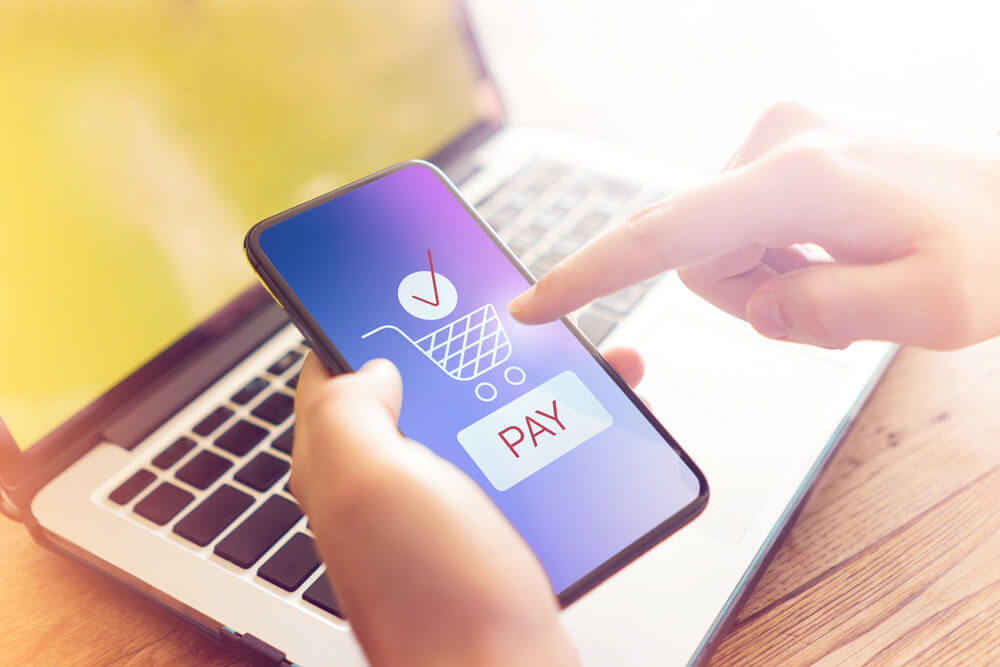
5 Strategic Advantages of Mobile Apps in Financial Services
Mobile technology has transformed how financial institutions engage with customers, especially in banking, investing, and other transactions. This shift is due to the growing demand for seamless, convenient, and accessible financial services.
Financial services mobile app development provides strategic advantages to financial institutions and their customers. It prioritizes convenience, security, personalization, innovation, and market expansion. This guide delves deeper into these aspects:
- Enhancing customer experience and convenience.
- Increasing operational efficiency.
- Promoting mobile security and data protection.
- Offering real-time data access and management.
- Boosting financial inclusion.
It also touches on measuring mobile app performance. Find out how a mobile app changes how your company connects with customers. Let’s go!
100+ companies trust us with their mobile app development needs. Watch the video below to learn why.
1. Enhancing Customer Experience and Convenience
Mobile apps in financial services significantly enhance user experience by providing unparalleled convenience through user-friendly interfaces and quick access to services. These apps offer seamless navigation and intuitive designs. They also simplify complex financial tasks, such as account management, fund transfers, and bill payments.
Features, including fingerprint or facial recognition for authentication, ensure secure yet hassle-free access. Real-time updates on account balances, transaction histories, and personalized alerts give users instant insights into their financial status.
Additionally, mobile apps streamline processes, such as loan applications or investment management. These improvements reduce time-consuming paperwork and allow customers to accomplish tasks swiftly anywhere. Mobile apps create a more convenient and efficient customer experience.
Consider these examples of financial services mobile app development:
- Mobile banking. Mobile apps offer comprehensive banking services to let customers perform various transactions on the go. They check account balances, transfer funds between accounts, and pay bills. They deposit checks through mobile capture and seamlessly manage investments using intuitive interfaces. Clients save time by avoiding visiting physical branches.
- Real-time notifications. Mobile platforms provide real-time updates and announcements about deposits, withdrawals, or unusual transactions. These instant alerts enhance security and promote peace of mind and financial control. For instance, customers now quickly detect and address potentially fraudulent activities.
- Contactless payments. Mobile apps facilitate contactless payments through near-field communication or QR codes. For instance, Apple Pay, Google Pay, or Samsung Pay enable users to tap their devices at compatible terminals. This innovation makes transactions faster, safer, and more convenient than card-based payments.
These examples show how mobile apps revolutionize financial services by offering a seamless, user-friendly experience that eventually enhances customer satisfaction.
2. Increasing Operational Efficiency

Mobile apps boost operational efficiency in financial institutions by automating services and reducing time-consuming tasks. They streamline various processes such as account management, transaction processing, and customer service.
Automation accelerates service delivery and frees up resources for routine work. In the process, your business spends less on administrative functions and physical infrastructure.
Moreover, mobile apps optimize human resource allocation. The staff now works on other value-added to-dos, like personalized customer interactions and financial advisory services.
3. Promoting Mobile Security and Data Protection
Security is critical in financial services mobile app development. It should address data protection and fraud prevention. Financial apps have robust security measures, e.g., encryption protocols and multi-factor authentication, to safeguard sensitive financial information from unauthorized access or breaches.
Continuous monitoring of suspicious activities and stringent compliance with industry regulations, such as the EU General Data Protection Regulation, reinforce the security framework. Financial institutions frequently update their apps, patch vulnerabilities, and proactively communicate security measures to enhance transparency and trust.
Here are advanced security features commonly found in financial mobile apps:
- Biometric authentication. It uses biometric data, including fingerprints, facial recognition, or iris scans, to authenticate user identities. Accessing the app or authorizing transactions is highly secure and convenient.
- End-to-end encryption. It applies robust encryption protocols to encode sensitive data transmitted between the mobile app and servers, ensuring information remains secure and indecipherable to unauthorized parties.
- Tokenization. This technology enhances transaction security by replacing sensitive card details with unique tokens. It reduces the risk of exposing actual card information and minimizes fraudulent activities.
- Multi-factor authentication. It requires users to provide multiple forms of identification or verification such as passwords, biometrics, or one-time codes as an extra layer of security access.
- Secure transactions and SSL/TLS. This feature uses secure socket layer (SSL) or transport layer security (TLS) protocols to secure connections between the mobile app and servers. They encrypt financial transactions to prevent interception or tampering.
These advanced security features improve the safety and integrity of financial mobile apps. They also protect user-sensitive data and transactions against security threats or fraudulent activities.
4. Offering Real-Time Data Access and Management

Real-time data access and management benefits your business in many ways. Customers receive instant insights into their financial status and activities for more informed decision-making and better financial planning. For instance, they track their spending, detect irregularities, and manage finances more effectively.
Real-time data management helps you make quicker and more accurate decisions. You can analyze real-time trends, assess risks, and personalize services based on customer behaviors. The data lets you respond better to market changes, detect fraudulent activities, and improve operational efficiency.
Financial mobile apps provide real-time data access and data management through these features:
- Instant account updates. These apps provide real-time account updates. Users immediately see their account balances, including deposits, withdrawals, and pending transactions. This feature ensures that clients have the most current information about their finances.
- Transaction tracking. Users track real-time transactions, categorize expenses, and view detailed transaction histories. They monitor spending easily and promptly identify unauthorized or unusual activities.
- Financial planning tools. Many apps offer comprehensive financial planning tools. These include budgeting calculators, goal-setting features, investment analyzers, and retirement planning modules. These empower users to set financial goals, create personalized budgets, analyze investment options, and plan for future expenses.
- Bill payments and reminders. Financial apps allow users to schedule, manage, and pay bills. They also alert clients of upcoming due dates to help them stay financially organized.
- Expense analyses and reports. Some financial platforms generate detailed expense analyses and reports. For instance, they break down spending into categories: food, utilities, and entertainment. Users visualize their expenses through graphs and charts and use the information for more thoughtful financial decision-making and spending habits.
These features empower users to manage their money while offering convenience, transparency, and control over their financial activities.
5. Boosting Financial Inclusion
Mobile money apps bridge the gap by offering convenient, accessible, and cost-effective financial solutions to people with limited or no access to traditional banking services.
For example, mobile banking platforms allow users to open accounts online. It benefits clients in rural or remote areas where physical banks are scarce. These apps also enable fund transfers, bill payments, and smartphone purchases to help customers become less reliant on cash-based transactions.
Moreover, mobile-based payment systems, such as mobile wallets or digital payment platforms, have extended financial services. These facilitate peer-to-peer transfers, enable merchants to accept digital payments, and offer financial services such as loans or insurance.
Financial companies and organizations collaborate with network operators, which have widespread coverage, to provide mobile financial services in remote areas.
Measuring the Success of Financial Mobile Apps

Measuring the value of a financial mobile app development involves assessing key performance indicators (KPIs). These include the following:
- User adoption rates. Tracking the number of downloads, active users, and user engagement metrics, e.g., app usage frequency and session duration, provides insights into the app’s popularity and user acceptance.
- Customer satisfaction scores. Surveys, feedback forms, and app store ratings gauge user satisfaction. Understanding user feedback and sentiment about its features, usability, security, and overall experience is crucial in assessing its success.
- Transaction volumes and value. Analyzing transaction volumes, frequency, and the total value of transactions through the app indicates its effectiveness in facilitating financial activities. Increasing transaction volumes show user trust and reliance on the app for commerce.
- Retention rates. Evaluating user retention rates helps measure the app’s ability to actively engage users over a certain period. A higher rate means clients find ongoing value in the app’s features and services.
- Conversion rates. Monitoring conversion rates for specific actions within the app, such as account openings, loan applications, or investment sign-ups, provides insights into its ability to convert users into customers or encourage desired actions.
- Security metrics. Tracking security-related KPIs, including the number of security incidents, successful biometric verifications, and fraud detection rates, measures the app’s ability to protect user data and prevent fraudulent activities.
- Time to resolve support issues. Evaluating the time taken to resolve customer inquiries, complaints, or technical problems indicates the app’s efficiency in promptly addressing user concerns.
Monitoring and analyzing these mobile app KPIs give your financial organization valuable information about the app’s performance and user impact. These metrics identify areas for improvement that optimize user experience and enhance security.
Summing Up
Mobile apps offer strategic advantages enhancing the financial services sector. They revolutionize accessibility with instant access to banking services, transactions, and financial information.
These apps enhance customer engagement and satisfaction through personalized experiences. Businesses leverage data to tailor services and recommendations. The platforms also streamline operations and improve efficiency and resource allocation through automation. Lastly, mobile apps extend services to underserved populations.
What strategies can you use to maximize the benefits of mobile app integration? Find out by working with a financial services mobile app development expert. Contact Digital Authority Partners (DAP) for the latest platform development and digital marketing strategies.
Want To Meet Our Expert Team?
Book a meeting directly here




